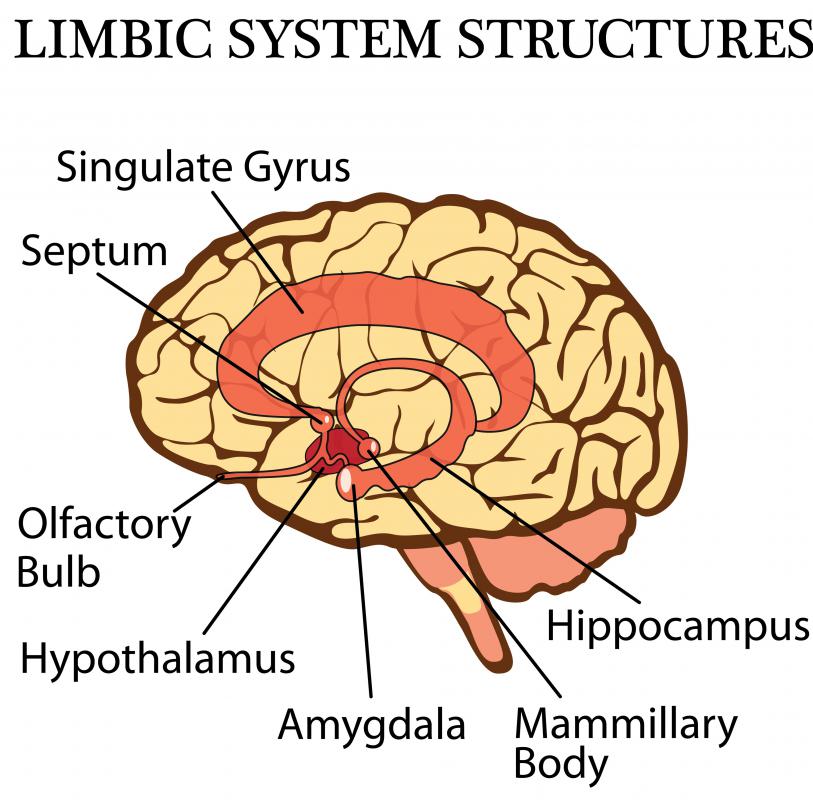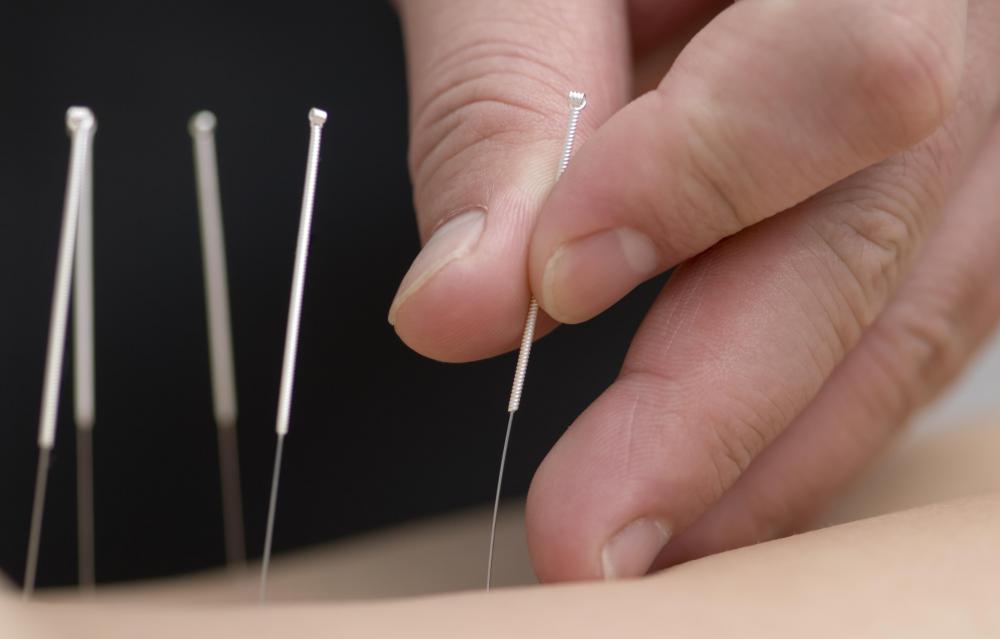At WiseGEEK, we're committed to delivering accurate, trustworthy information. Our expert-authored content is rigorously fact-checked and sourced from credible authorities. Discover how we uphold the highest standards in providing you with reliable knowledge.
What is Electrotherapy?
Electrotherapy is the therapeutic use of electricity for medical treatment. This type of treatment can be delivered through a variety of devices which produce ultrasound, infrared rays, and varying levels of electric current. The use of electricity dates back to ancient Greece, when shocks from an electric eel were used to treat headaches. It was not until the twentieth century, however, that technology had advanced enough to provide safe, effective devices which could use electricity to promote healing.
Electrotherapy treatments are most commonly employed to relieve pain, reduce swelling, relax muscles, speed up healing, and stimulate acupuncture points. Chiropractors and physiotherapists have been using various forms and equipment to administer these treatments with great success. Physiotherapists in the UK, Canada, and Australia have all published guides for practitioners detailing the most effective settings for different treatments and machines.

Back and neck pain, whether acute or chronic, is frequently treated with electrotherapy. One of the most common machines available is the Transcutaneous Electrical Nerve Stimulation (TENS) unit which delivers a range of frequencies, and can be set to match the comfort level of the patient. This portable piece of equipment can be worn at home for long-term pain relief. Patients who need deeper skin penetration can use an Interferential Current device (IFC) that delivers a high frequency wave. Acute injuries involving bleeding, major tissue damage and swelling may achieve better results with Galvanic Stimulation (GS), which delivers direct current instead of the alternating current employed by the other machines.

Fibromyalgia patients may also benefit from electrotherapy. TENS is one of the treatments used at home, though longer-lasting pain relief can often be achieved with the Percutaneous Electrical Nerve Stimulator (PENS), which employs needles rather than pads. PENS treatments are administered by a medical practitioner who inserts the needle electrodes into the skin in painful areas, directing the current more effectively in a pain-free manner.

Patients who fail to achieve sufficient relief from either TENS or PENS treatments may also consider Cranial Electrotherapy Stimulation (CES). Originally these treatments ware exclusively for emotional or sleep disorders, but are now considered an alternative treatment for pain. Two electrodes are placed on the earlobes and a very mild electrical current is passed back and forth through the brain. The impulses stimulate the hypothalamus to produce more neurohormones to help regulate pain symptoms.

Deep brain stimulation (DBS) is an electrotherapy procedure used to treat some neurological disorders, primarily Parkinson’s disease. The treatment involves implanting a DBS device, called a neurostimulator, into the brain where it delivers electrical stimulation and blocks the nerve signals causing tremors. This device consists of three parts; the lead, or electrode, the extension, and the neurostimulator, or battery pack. The lead is inserted through the skull to the affected part of the brain; the extension runs under the skin of the head, neck and shoulder to attach to the neurostimulator, which is generally implanted near the collarbone or in the chest.

Electrotherapy is frequently used in conjunction with other techniques, such as exercise therapy, manipulation, ultrasound and acupuncture. It is relatively pain-free and has no significant negative side effects. Patients who are pregnant or have a pacemaker or defibrillator could have serious reactions to the electricity, however, and should not attempt this treatment.
AS FEATURED ON:
AS FEATURED ON:















Discuss this Article
Post your comments